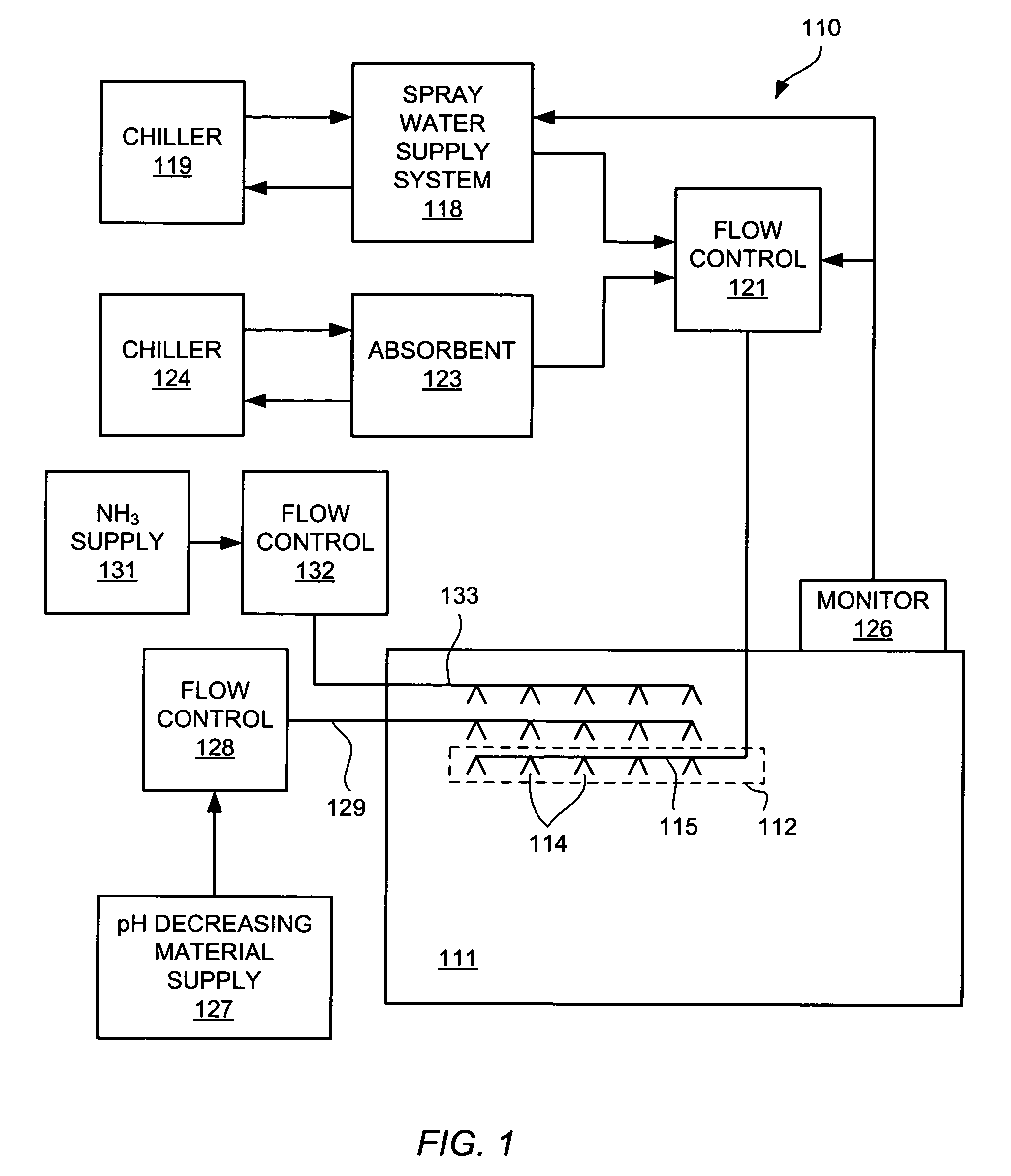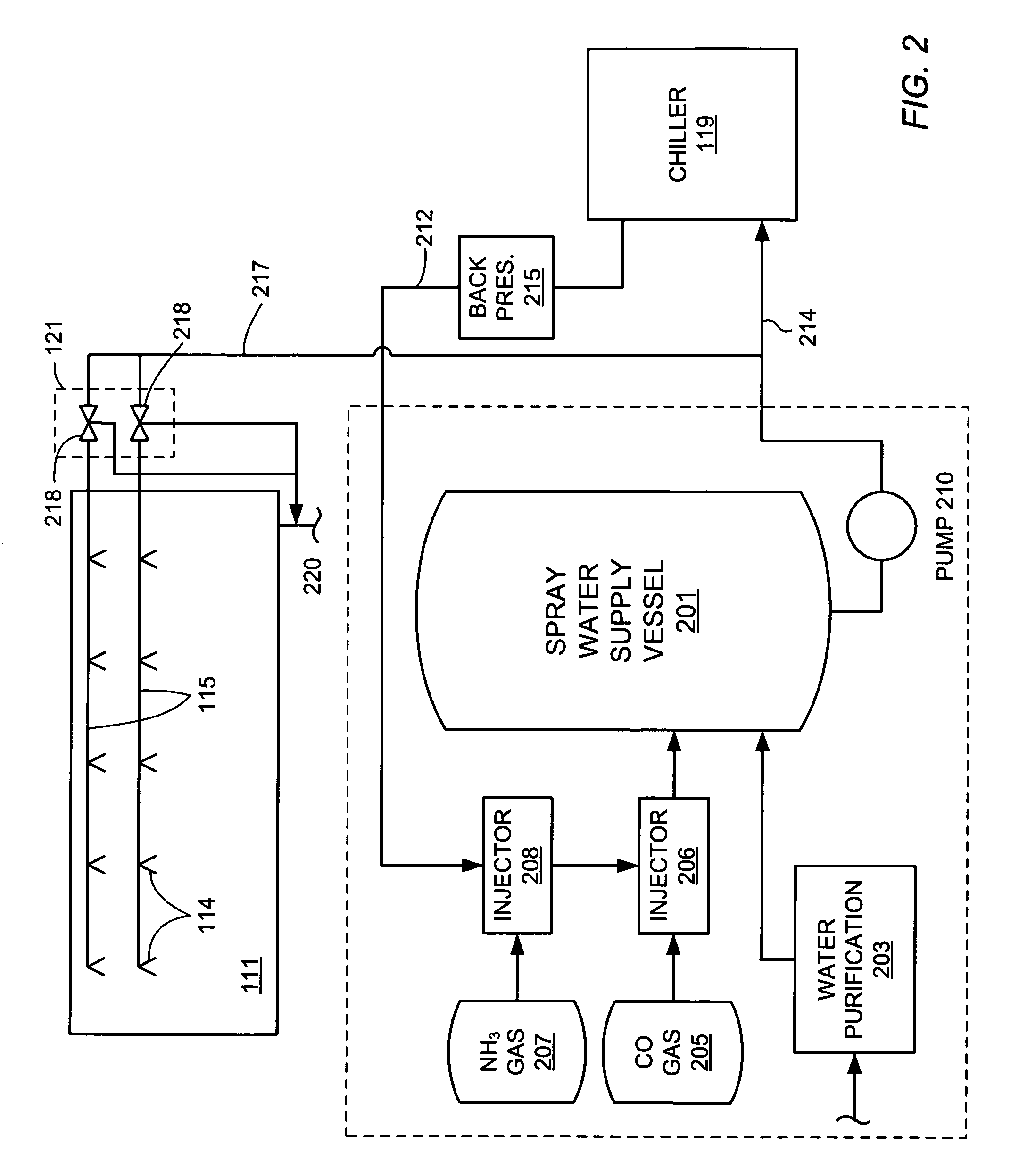Method and apparatus for applying carbon monoxide to suppress microbe activity in meat storage enclosures
a carbon monoxide and meat storage technology, applied in the field of food product microorganism suppression, can solve the problems of almost inevitably exposed meat products to pathogenic bacteria, nonpathogenic bacteria are also inevitably present, and the carcass itself may be a source of contamination, so as to suppress microorganism activity, inhibit the effect of microorganism propagation, and increase the ph of moistur
- Summary
- Abstract
- Description
- Claims
- Application Information
AI Technical Summary
Benefits of technology
Problems solved by technology
Method used
Image
Examples
Embodiment Construction
[0019]Referring to FIG. 1, an apparatus 110 embodying the principles of the invention is adapted to introduce spray water into an enclosure 111. This spray water may be introduced for any reason, including for the purpose of helping control shrinkage in meat products held in the enclosure, and particularly substantially whole carcasses being chilled in the enclosure. The apparatus 110 shown in FIG. 1 is particularly suited for use with chillers such as a hot box or holding cooler used in initial meat processing operations, or holding coolers used in final meat processing operations. However, the invention is not limited to these applications. Rather, enclosure 111 may be any enclosure for containing meat products, whether the meat product is in the form of substantially whole carcasses, coarsely comminuted meat products such as steaks, roasts, and filets, or highly comminuted meat products such as ground beef. FIG. 1 shows treatment apparatus 110 associated with a single enclosure 1...
PUM
 Login to View More
Login to View More Abstract
Description
Claims
Application Information
 Login to View More
Login to View More - R&D
- Intellectual Property
- Life Sciences
- Materials
- Tech Scout
- Unparalleled Data Quality
- Higher Quality Content
- 60% Fewer Hallucinations
Browse by: Latest US Patents, China's latest patents, Technical Efficacy Thesaurus, Application Domain, Technology Topic, Popular Technical Reports.
© 2025 PatSnap. All rights reserved.Legal|Privacy policy|Modern Slavery Act Transparency Statement|Sitemap|About US| Contact US: help@patsnap.com



